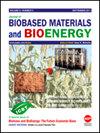Multivariate Linear Regression Model for Predicting Soil Texture and Plant Degradation in Parks
IF 0.5
4区 医学
引用次数: 0
Abstract
The soil, which makes up the top layer of the Earth’s surface, is crucial for the energy and nutrient flows required for the growth of plants and is, therefore, crucial for the environmental study of parks. Since plants and soil are interdependent, soil degradation affects plant quality. The soil’s capacity to store water and support germination directly correlates with plant growth, and soil degradation ultimately results in plant death. One of the most crucial elements in preventing soil degradation is maintaining ecological factors and identifying their impact on plant life through relationships. Therefore, it is essential to simultaneously evaluate and predict the overall condition of plants and soil in designated regions like parks and reserved areas. Hence a model is developed to predict park management practices like Soil Texture (ST) and its impacts on Plants Degradation (PD) using Multivariate Linear regression (MvLR-STPD) to maintain the park’s ecology. Initially, creating a predictive model that can precisely estimate soil texture and plant degradation in parks based on a collection of predictor variables is the main goal of the MvLR. Secondly, based on the data and the precise correlations between the predictor factors and the targeted variables, gradient descent optimization is used to adapt and modify its parameters. The model can extract the correct value, identify the basic variances, and determine the relationship between the impacted variables owing to the optimization method. The model’s performance is validated by prediction metrics like sensitivity analysis and coefficient of determination R2 with loss function, namely, Mean Squared Error (MSE), Root Mean Squared Error (RMSE), Prediction accuracy, correlation coefficient, and Mean Absolute Error (MAE).公园土壤质地与植物退化的多元线性回归模型
土壤构成了地球表面的顶层,对植物生长所需的能量和养分流动至关重要,因此对公园的环境研究至关重要。由于植物和土壤是相互依存的,土壤退化会影响植物的质量。土壤储存水分和支持发芽的能力与植物生长直接相关,土壤退化最终导致植物死亡。防止土壤退化的最关键因素之一是维持生态因素并通过关系确定它们对植物生命的影响。因此,有必要同时对公园、保护区等指定区域的植物和土壤的整体状况进行评价和预测。因此,我们开发了一个模型,利用多元线性回归(MvLR-STPD)来预测公园管理实践,如土壤质地(ST)及其对植物退化(PD)的影响,以维持公园的生态。最初,MvLR的主要目标是建立一个预测模型,根据一系列预测变量精确估计公园土壤质地和植物退化。其次,基于数据和预测因子与目标变量之间的精确相关性,采用梯度下降算法对其参数进行自适应和修正;由于采用了优化方法,该模型可以提取正确的值,识别基本方差,确定影响变量之间的关系。通过灵敏度分析和带有损失函数的决定系数R2等预测指标,即均方误差(Mean Squared Error, MSE)、均方根误差(Root Mean Squared Error, RMSE)、预测精度、相关系数和平均绝对误差(Mean Absolute Error, MAE),验证模型的性能。
本文章由计算机程序翻译,如有差异,请以英文原文为准。
求助全文
约1分钟内获得全文
求助全文

 求助内容:
求助内容: 应助结果提醒方式:
应助结果提醒方式:


